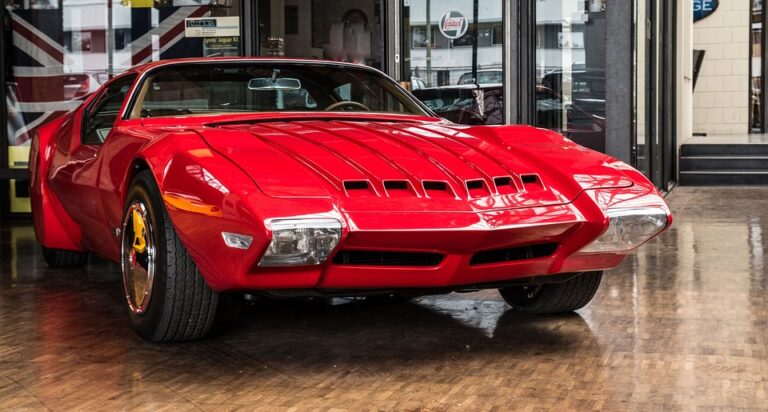Dream Machines: How Concept Cars Shape the Automotive Industry
Concept cars, often viewed as the dream machines of the automotive world, play a vital role in shaping how we think about the future of transportation. These avant-garde vehicles, which are often showcased at auto shows, serve not only to capture the imagination of car enthusiasts but also to influence the direction of car manufacturing and technology. This article explores the significance of concept cars, how they drive trends in the automotive industry, and the innovations they inspire.
What Are Concept Cars?
Concept cars are prototype vehicles that car manufacturers create to test new ideas and showcase future technology. Unlike production cars, which are designed for mass production, concept cars mainly exist to represent a manufacturer’s vision, garner customer feedback, and entice investors. They often feature groundbreaking designs, advanced technologies, and sustainable materials that may or may not make it past the drawing board.
Why Are Concept Cars Important?
-
Innovation and Inspiration: Concept cars act as a breeding ground for innovation. Several features in ordinary vehicles today were once concepts, such as advanced safety systems, electric drivetrains, and even the use of augmented reality displays in dashboards.
-
Market Trends: By showcasing futuristic designs and technologies, concept cars illuminate the paths that the automotive industry may take. The growing popularity of electric and autonomous vehicles is a testament to this influence. According to a recent report by McKinsey, over 50% of new car sales in Europe are expected to be electric and hybrid vehicles by 2030.
- Consumer Engagement: Concept cars generate excitement and buzz around a brand, drawing attention to upcoming models and features. Auto shows with concept car unveilings often create substantial media coverage and consumer interest, which can greatly influence a brand’s market position.
Noteworthy Examples of Concept Cars
One of the most celebrated recent concept cars is the Tesla Roadster 2.0, which promises to accelerate from 0-60 mph in just 1.1 seconds. This vehicle showcases not only performance but also sustainable practices, demonstrating that electric cars can rival their gasoline counterparts.
Another remarkable example is the Mercedes-Benz Vision EQS. This striking concept embodies the future of luxury electric sedans. With its sleek design and autonomous capabilities, it foreshadows a shift towards sustainable luxury in the automotive market.
The Process of Developing Concept Cars
Creating a concept car is an intricate process that often involves the collaboration of designers, engineers, and marketing teams. The development typically follows these steps:
- Market Research: Identifying emerging trends and consumer needs.
- Design Phase: Sketching and rendering initial ideas.
- Prototyping: Building a physical model, often utilizing advanced materials and technologies to represent innovations.
- Feedback Collection: Presenting at auto shows and gathering consumer and industry reactions.
The Ripple Effect on Production Cars
The relationship between concept cars and production vehicles is symbiotic. Success or failure in the realm of concept cars can significantly impact the strategies manufacturers take for their production line.
For example, when Ford unveiled its Mustang Mach-E concept, it wasn’t just a showcase piece. The overwhelming positive response helped Ford pivot towards electric SUV models much sooner than originally planned. This reaction highlights how consumer feedback on concept cars can tighten the feedback loop, resulting in more responsive and relevant production vehicles.
Emerging Trends Influenced by Concept Cars
Several notable trends in the automotive industry have been driven by concept vehicles:
- Electric and Hybrid Technologies: The push for sustainability has led manufacturers to invest heavily in electric and hybrid options.
- Autonomous Driving Features: With autonomous features shown in concept cars, there is a significant push towards developing fully self-driving technologies, predicted to account for up to 25% of car sales by 2035.
- User-Centric Design: Concept cars often emphasize human-centered design, influencing how automakers create user interfaces and in-cabin experiences.
The Future of Concept Cars
As the automotive landscape continues to evolve, concept cars will remain at the forefront, shaping industry standards and consumer expectations. The rise of smart technology, sustainability, and unique design will only enhance the role of these dream machines in the years to come.
Conclusion
Concept cars are not just flashy prototypes; they are the vanguards of automotive innovation that shape trends, inspire consumer interest, and influence the design of production vehicles. As we stimulate our imaginations with these dream machines, industries are also encouraged to think provocatively about the future of mobility.
For more in-depth insights related to automotive trends, check out these articles on buzzo.live:
- "Electric Dreams: The Future of Electric Vehicles"
- "Smart Cars: The Technological Revolution on the Road"
- "The Transition to Green Energy in the Automotive Industry"
To learn more about the global automotive industry and its future trends, you may find these external resources helpful:
Images:
- Concept Car Exhibition: Illustration of the latest concept cars showcased at an auto show. (Alt text: Concept Cars displayed at the auto show)
- Electric Concept Car: An electric concept car representing the future of eco-friendly automotive design. (Alt text: Electric Concept Car showcasing sustainability)
By understanding the implications and innovations driven by concept cars, we can better prepare for the automotive advancements of tomorrow.


